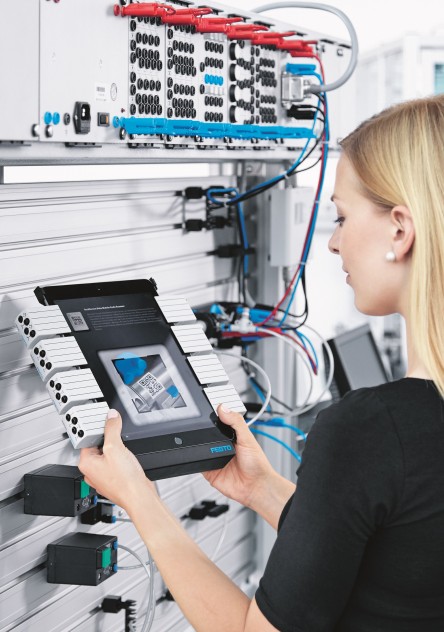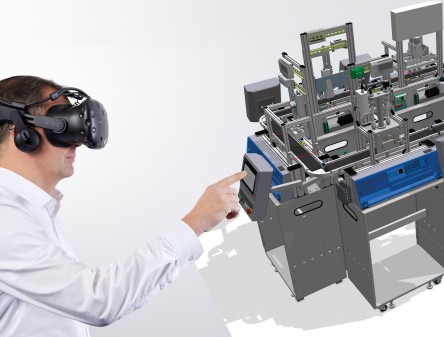Virtual reality
Learning by doing increases learning comprehension and retention of knowledge. However, the day-to-day work in industrial factories and the associated productivity targets mean that real processes there cannot be disrupted. Training in a VR environment is highly realistic and offers incredible options for technical vocational and advanced training, such as virtual maintenance work or realistic simulations of situations that would otherwise be life-threatening.

Virtual learning
Virtual basic and further training for real success.
Virtual learning transforms learning processes into realistic learning experiences. This enhances students' understanding of technical systems. They immerse themselves in a virtual world where they can work independently on learning projects and content, learn together with others and actively and systematically acquire knowledge.
Virtual learning and mixed reality – make the learning experience:
- Exciting
- Realistic
- Effective
- Lasting

Virtual reality with CIROS®
With the comprehensive CIROS® simulation environment, you can create a virtual replica of the CP learning factory and its modules. By using virtual reality, students can move around the factory in 3D, familiarising themselves with the environment and completing tasks in the virtual world. Thanks to the integrated system approach, the virtual reality solution has a complete MES® connection and thus also an ERP interface (SAP4school). For location-independent learning!
CIROS® VR is available as a free, pre-installed plug-in for all CIROS® 6 licences, both for CIROS® Education and CIROS® Studio. Use CIROS® to supplement existing learning systems or as a stand-alone training program for completely virtual training sessions.
Augmented reality (AR)
Augmented reality allows the user to see the real world as well as additional virtual information. To experience and view the virtual layer, users need a smartphone, tablet, head-up display, holographic system or augmented reality glasses. AR technology is perfect for providing students with additional information and thus enhancing the learning process in the real world.

The AR app from Festo Didactic
The Festo Didactic augmented reality app supports you in commissioning your mechatronic training system. Use your tablet or smart phone to explore your learning system with augmented reality. With the help of special markers for individual training system modules, you can access additional information such as datasheets, documentation as well as videos of the production process. The AR app intuitively displays the layout, the control interface and the steps that need to be followed to commission the training system. Develop your own AR scenarios according to your requirements, and integrate them into the AR app.